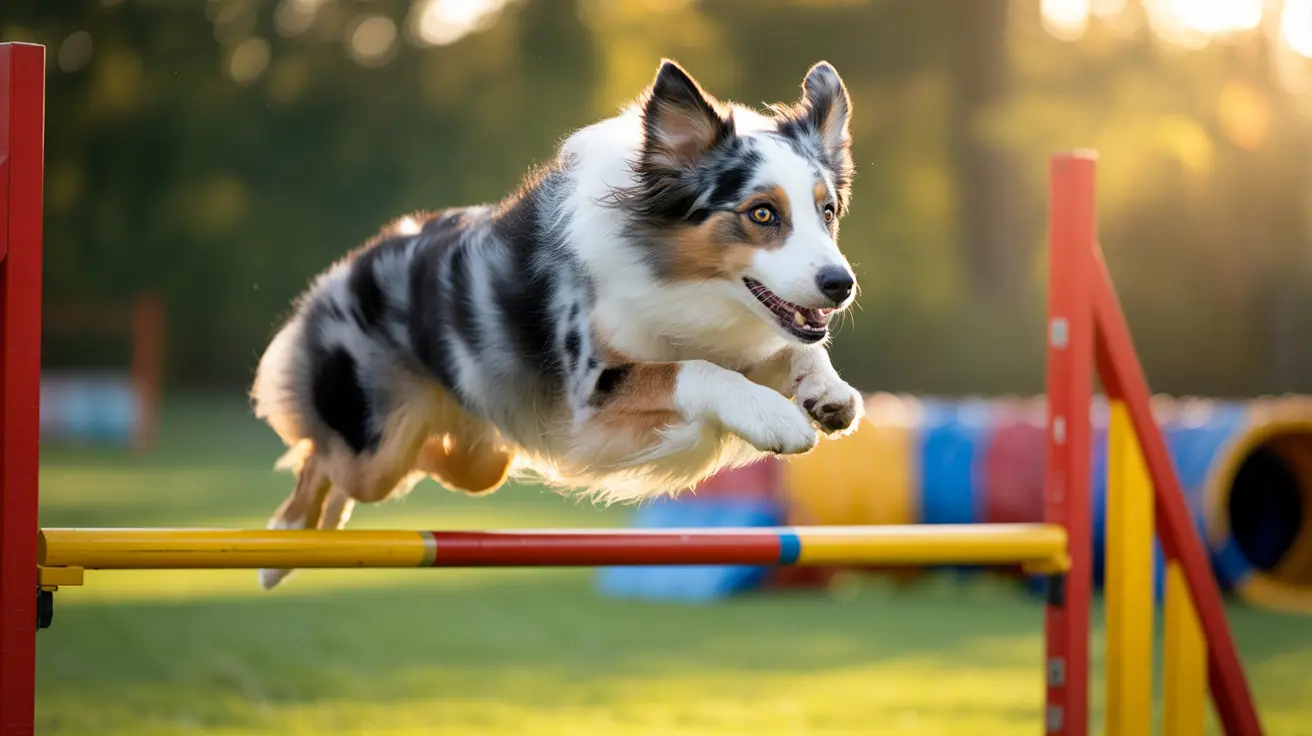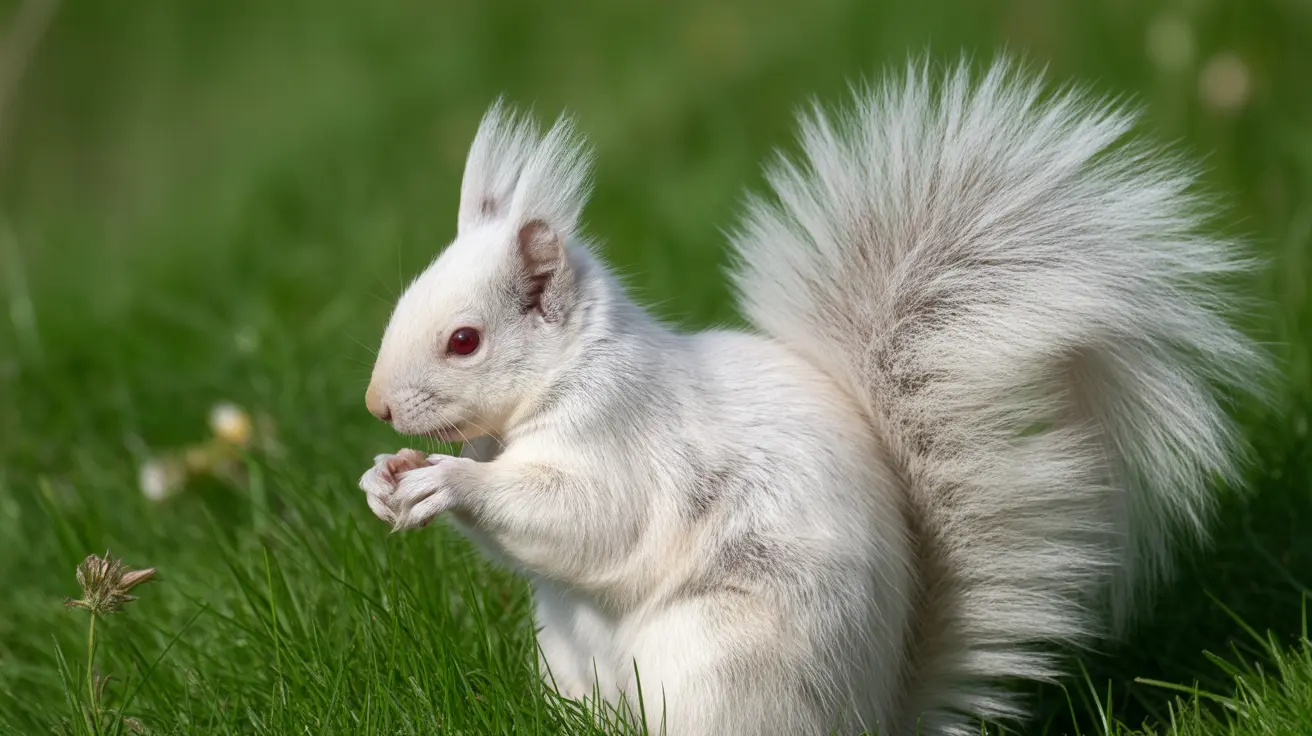The Ultimate Dog Sports Guide: 15+ Fun Activities to Keep Your Pup Active and Engaged
Are you looking for exciting ways to bond with your furry companion while keeping them physically fit and mentally stimulated? Dog sports offer the perfect solution, combining exercise, training, and fun into activities that both you and your dog can enjoy together. From high-energy obstacle courses to gentle scent work, there's a dog sport suitable for every breed, age, and fitness level.
This comprehensive dog sports guide will introduce you to over 15 popular canine activities, helping you discover the perfect match for your dog's personality and physical capabilities. Whether you're seeking competitive challenges or simply want to add variety to your daily exercise routine, these sports will strengthen your bond while providing essential mental and physical stimulation for your four-legged friend.
What Makes Dog Sports Special?
Dog sports are competitive activities designed specifically for dogs and their owners to participate in together. Unlike simple fetch or walks in the park, these structured activities promote physical exercise, mental stimulation, and strengthen the bond between dogs and handlers through teamwork and communication.
The beauty of dog sports lies in their diversity and accessibility. Many activities are open to all breeds, including mixed breeds, with some requiring registration with organizations such as the American Kennel Club (AKC). Whether your dog is a high-energy Border Collie or a gentle senior Golden Retriever, there's a sport that can accommodate their unique needs and abilities.
High-Energy Obstacle and Agility Sports
Dog Agility: The Classic Challenge
Dog agility stands as one of the most popular canine sports, involving dogs navigating obstacle courses with jumps, tunnels, and weave poles while being directed by their handlers. This sport builds coordination, fitness, trust, and communication between dog and owner as dogs must respond solely to voice commands and gestures while navigating a 100-200 meter course.
The sport emphasizes teamwork and obedience, as handlers cannot touch their dogs or the obstacles during competition. Dogs must rely entirely on their handler's direction, making this an excellent activity for strengthening your communication and bond.
Canine Hoopers: Low-Impact Alternative
For dogs with joint sensitivities or older canines, Canine Hoopers provides an excellent alternative to traditional agility. This low-impact obstacle course sport features hoops, barrels, and tunnels that involve fluid movement without the jarring impact of jumping. It's ideal for older or joint-sensitive dogs who still crave mental and physical stimulation.
Dog Parkour: Urban Adventure
Dog Parkour represents a modern, low-impact sport involving dogs navigating urban or natural obstacles to build confidence and have fun. This activity encourages dogs to interact with their environment creatively while developing problem-solving skills and physical awareness.
Speed and Chase Sports
Fast Cat and Lure Coursing
Fast Cat and Lure Coursing tap into dogs' natural hunting instincts by having them chase a mechanically operated lure that simulates prey. These sports test speed and hunting instincts, making them particularly appealing to sighthounds and other breeds with strong chase drives.
Flyball: High-Energy Team Sport
Flyball is a fast-paced relay race where dogs jump hurdles, trigger a flyball box that releases a tennis ball, and race back to their handler. This high-energy sport promotes energy burn, focus, teamwork, and socialization while requiring precise timing and coordination between team members.
Scent-Based Sports
Scentwork (Nose Work)
Scentwork harnesses dogs' exceptional sense of smell as they locate specific scents hidden in items or environments. This sport enhances confidence and provides a purposeful activity that's mentally exhausting and deeply satisfying for dogs. It's suitable for all breeds and ages, making it one of the most accessible dog sports available.
Mantrailing
Mantrailing involves dogs following a human's scent trail to find that person. This dog-led, social, non-competitive activity is suitable for all breeds and ages, providing mental stimulation while allowing dogs to use their natural tracking abilities in a structured environment.
Water and Pulling Sports
Dock Diving
Dock Diving challenges dogs to jump off docks into water, aiming for either distance or height. This sport is perfect for water-loving breeds and provides excellent exercise while being easy on joints due to the soft water landing.
Bikejoring and Pulling Sports
Bikejoring involves dogs being harnessed and attached to a bicycle, pulling the rider along cross-country trails. This activity requires dog obedience and physical preparedness, combining the handler's desire for exercise with the dog's natural pulling instincts.
Sled Dog Rallies represent the traditional end of the pulling spectrum, where teams of dogs pull sleds over snow-covered terrain in races varying from short distances to endurance events.
Creative and Artistic Sports
Heelwork to Music and Canine Freestyle
Heelwork to Music and Canine Freestyle (dog dancing) allow dogs and handlers to perform choreographed obedience routines set to music. These sports are suitable for all skill levels and emphasize adapting movements to a dog's natural tendencies, making obedience fun and personalized through creative expression.
Trick Training
Trick Training focuses on teaching dogs various entertaining behaviors that provide mental stimulation while strengthening the human-dog bond. This accessible activity can be practiced anywhere and builds the foundation for more advanced sports.
Specialized and Breed-Specific Sports
Treibball: Herding Without Livestock
Treibball allows dogs to herd large exercise balls into goals, using natural herding instincts and problem-solving abilities. This sport is particularly appealing to herding breeds but can be enjoyed by any dog with the drive to move objects.
Rally Obedience
Rally Obedience involves completing courses where dogs and handlers complete obedience tasks with positive encouragement. This sport emphasizes the partnership between dog and handler while building foundational skills useful in other activities.
Choosing the Right Dog Sport for Your Pet
Selecting the appropriate sport for your dog requires careful consideration of several factors. Your dog's breed traits, age, temperament, and health condition all play crucial roles in determining which activities will be most suitable and enjoyable.
High-energy breeds like Border Collies, Australian Shepherds, and Jack Russell Terriers often excel in agility and flyball, while breeds with strong scent drives like Bloodhounds and Beagles may prefer tracking sports. Gentle giants might enjoy slower-paced activities like rally obedience or heelwork to music.
Getting Started Safely
Before beginning any dog sport, consult with a veterinarian to ensure your dog's health and physical readiness. This step is crucial for preventing injuries and ensuring your dog can safely participate in your chosen activities.
Start by finding local training clubs, classes, or groups affiliated with organizations such as the American Kennel Club (AKC), United Kennel Club (UKC), or North American Dog Agility Council (NADAC). These organizations offer events, training resources, and competitions while providing structured learning environments.
Acquire necessary sport-specific equipment such as agility tunnels, flyball boxes, harnesses, or discs, but remember that many sports can be started with minimal investment. Use positive reinforcement and gradual skill-building during training, always respecting your dog's pace and comfort level.
Health and Safety Considerations
Safety should always be your top priority when participating in dog sports. Regular veterinary check-ups help monitor your dog's ongoing health and catch potential issues early. Implement appropriate warm-up and cool-down routines to prevent injuries, and avoid overexertion by monitoring for signs of fatigue.
For dogs engaged in high-impact sports, joint health becomes particularly important. Consider discussing joint supplements with your veterinarian, as newer options such as undenatured type II collagen (UC-II®), omega-3 fatty acids, and curcumin may be more effective than traditional glucosamine and chondroitin for managing joint health and reducing inflammation.
Always tailor the difficulty and intensity to your dog's physical condition, and remember that some dogs may need modifications or alternative activities as they age or if health conditions develop.
Benefits Beyond Competition
While some handlers pursue competitive success, many dog owners find participation in dog sports personally rewarding beyond competition. These activities help channel dogs' energy, instincts, and intelligence into enjoyable pursuits that promote longevity and wellbeing while building friendships and a sense of achievement.
Dog sports enhance physical fitness and mental stimulation, strengthen the human-dog bond, and provide socialization opportunities for both dogs and owners. They also help manage dog behavior by channeling energy positively, often reducing destructive behaviors at home.
Frequently Asked Questions
- Q: Can mixed breed dogs participate in dog sports?
Yes, most dog sports are open to all breeds, including mixed breeds. Some competitions may require registration with organizations like the AKC, but many sports welcome all dogs regardless of pedigree.
- Q: What age should dogs start participating in dog sports?
Most dogs can begin basic training for dog sports around 6 months old, but high-impact activities should wait until growth plates close (typically 12-18 months depending on breed size). Gentle activities like trick training and basic scentwork can start earlier.
- Q: How do I know if my dog is physically ready for a particular sport?
Consult with your veterinarian before starting any dog sport. They can assess your dog's physical condition, joint health, and overall fitness level to recommend appropriate activities and any necessary precautions.
- Q: Are dog sports expensive to get started?
Many dog sports can be started with minimal investment. Basic training classes typically cost $50-150, and some sports like trick training or basic scentwork require little to no special equipment. More specialized sports may require specific gear, but you can often start with borrowed or basic equipment.
- Q: How often should dogs participate in sports activities?
Frequency depends on the sport and your dog's fitness level. Most dogs benefit from 2-3 training sessions per week, with competition dogs potentially training more frequently. Always monitor your dog for signs of fatigue and provide adequate rest between sessions.
- Q: Can older dogs learn new dog sports?
Absolutely! While older dogs may need modifications or gentler sports like rally obedience, heelwork to music, or scentwork, age doesn't prevent dogs from learning new activities. These sports can actually help maintain cognitive function and physical mobility in senior dogs.
- Q: What if my dog seems uninterested in the sport I chose?
Not every sport suits every dog. If your dog shows reluctance or stress, try a different activity that better matches their personality and instincts. The goal is mutual enjoyment, so finding the right fit may take some experimentation.
Conclusion
Dog sports offer incredible opportunities to deepen your bond with your canine companion while providing essential physical and mental stimulation. From the precision of agility courses to the instinct-driven excitement of scent work, there's a perfect activity waiting for every dog-and-handler team.
Remember that the journey is just as important as any competitive goals you might set. Focus on positive training methods, prioritize safety, and most importantly, have fun together. Whether you're navigating your first agility course or perfecting a freestyle routine, these shared experiences will create lasting memories and strengthen the unique partnership you share with your dog.






